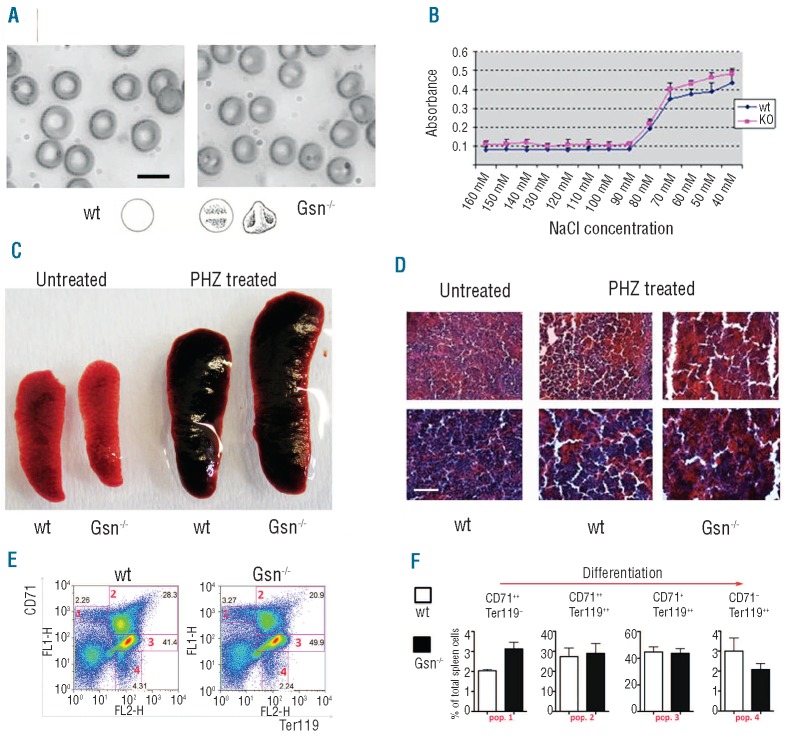Figure 5.
Adult Gsn−/− mice are unable to recover from PHZ-induced anemia: (A) Morphological analysis of blood from adult Gsn−/− mice showed the presence of knizocytes. Bar: 5 μm. (B) Osmotic lysis test. X axis: NaCl concentration; Y axis: amount of proteins released upon osmotic lysis, measured as absorbance at 595 nm (Bradford method). (C) The mean weight of the spleen is increased in Gsn−/− mice under PHZ-induced erythropoietic stress. (D) Morphological analysis of spleen sections from wt and Gsn−/− mice. Bar: 200 μm. (E) Spleen cells isolated from wt and Gsn−/− mice and stained with anti CD71-FITC and antiTer119-PE antibodies for FACS analysis. The panel shows dot plots of wt and Gsn−/− mice. (F) Percentage of positive cells within the four major distinct populations of progressively differentiating cells (CD71++Ter119-, CD71++ Ter119++, CD71+Ter119++ and CD71− Ter119++ cells) were evaluated on total spleen cells. Histograms represent the mean of three wt and three Gsn−/− mice; significance levels were calculated by a t test for unpaired data.

